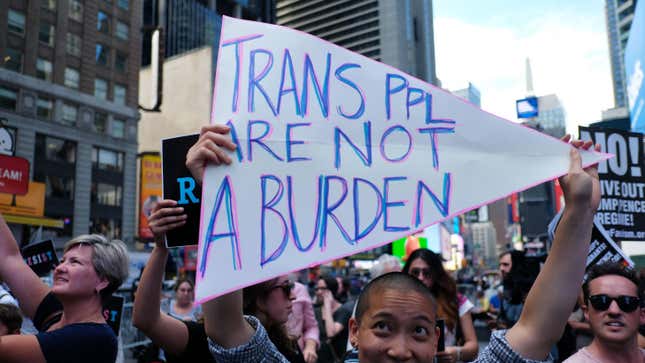
If you read enough stories about the nuts and bolts of ad revenue, you’ll notice this weird incongruity that crops up again and again. On one hand, online ads are a crucial (albeit annoying AF) piece of internet architecture; the hundreds of billions of dollars in digital ad spend getting poured into the internet each year is the financial fuel that keeps your favorite streamers, retailers, and news outlets in business. But this financial fuel gets doled out by countless tiny intermediaries, each with their own arbitrary automated systems for deciding how many dollars get doled out where.
The result, usually, is that some of these dollars don’t get doled out at all, and the ones that do are more likely to wind up funding hate speech than a site focused on, say, LGBTQ+ issues.
Queer media has gotten the short end of this stick for a while, even though gay-friendly content litters countless TikTok feeds and Instagram ads, not to mention local storefront windows come June every year. Taylor Swift has a queer anthem! “Holigays” is just a word people say now! But in spite of this utter mainstream-ification of all things LGBTQ+, these middlemen will still typically regard queer content—no matter how benign—as too “icky” or “adult” to bother monetizing. So queer outlets shutter, queer journalists struggle to keep their jobs, and queer streamers scramble to keep their channels monetized.
Depressing? You betcha. But there is some good news: This month, YouTube announced it would be expanding its “Advertiser-friendly content guidelines” to include videos featuring “gender identity devices.” Specifically:
Uploads showcasing objects that resemble genitalia, like breasts or penises, without showing nudity that assist creators as they explain their gender dysphoria journeys may run ads.
The line between nudity and something that just “resembles” nudity is still ultimately up to YouTube’s discretion, but the guidelines do offer some basics: The objects can’t primarily be used “for sexual gratification,” for one thing, and should instead be used “to simulate the weight or appearance of genitalia on the body.” This means that a transmasculine person can’t run ads alongside, say, a review of their favorite sex toy, but they can run ads alongside a review of their favorite packer, or even their favorite stand-to-pee devices. Ads are also free to run alongside videos featuring binders, artificial breasts, or any other device that’s expressly built to help a creator with their, well, “gender dysphoria journey,” as YouTube put it.
The platform is throwing the LGBTQ+ community a pretty small bone here—and one that will undoubtedly exclude countless queer creators who express their gender outside of YouTube’s vaguely defined guardrails. But it’s something, and something that comes in the wake of years’ worth of the exact opposite. Starting mid-2017, YouTubers who focused their videos on queer or trans topics were suddenly finding that the platform’s automated review systems were demonetizing their content. Despite the fact that these clips were entirely safe-for-work, the fact that they discussed LGBTQ+ topics was enough to get the content restricted from public view and inaccessible to advertisers.
When one creator tried to get to the bottom of the problem in 2019, he found evidence that YouTube’s own automated system—like those of its adtech contemporaries—was simply flagging words like “gay” or “lesbian” as too “adult” for most advertisers (“heterosexual” is a-okay though). YouTube denied any discriminatory practices at the time, but it didn’t offer any public explanation for the queer creators that were finding themselves demonetized en masse. A suit filed against the platform in 2019 by a handful of those queer creators was thrown out by a California judge earlier this year.
YouTube had effectively beat this battle—so why the change of heart? Well, for starters, there’s no shortage of rival platforms chomping at the bit to court YouTubers onto their services right now.
And while YouTube can—and has!—offered oodles of cash in an attempt to convince its talent to stay, ultimately Instagram and TikTok have creator funds of their own. Not only that, but both of those apps have strong footholds in the queer community, which is an advantage that YouTube clearly lacks.
Even if this update is more about sticking it to competitors than it is about helping out queer creators, the net effect is the same. YouTube’s parent company, Google, accounts for more than a quarter (28.6%!) of digital ad spending across the entire internet, a figure that’s only rivaled by fellow tech giants Facebook and Amazon. It reported more than $7 billion in ad revenue this most recent quarter, and that number isn’t showing any signs of getting smaller.
In other words, YouTube is kind of a Big Deal in the world of online advertising—and when it makes changes like this, the rest of the online ad ecosystem takes note. Now we just need to see what they do next.